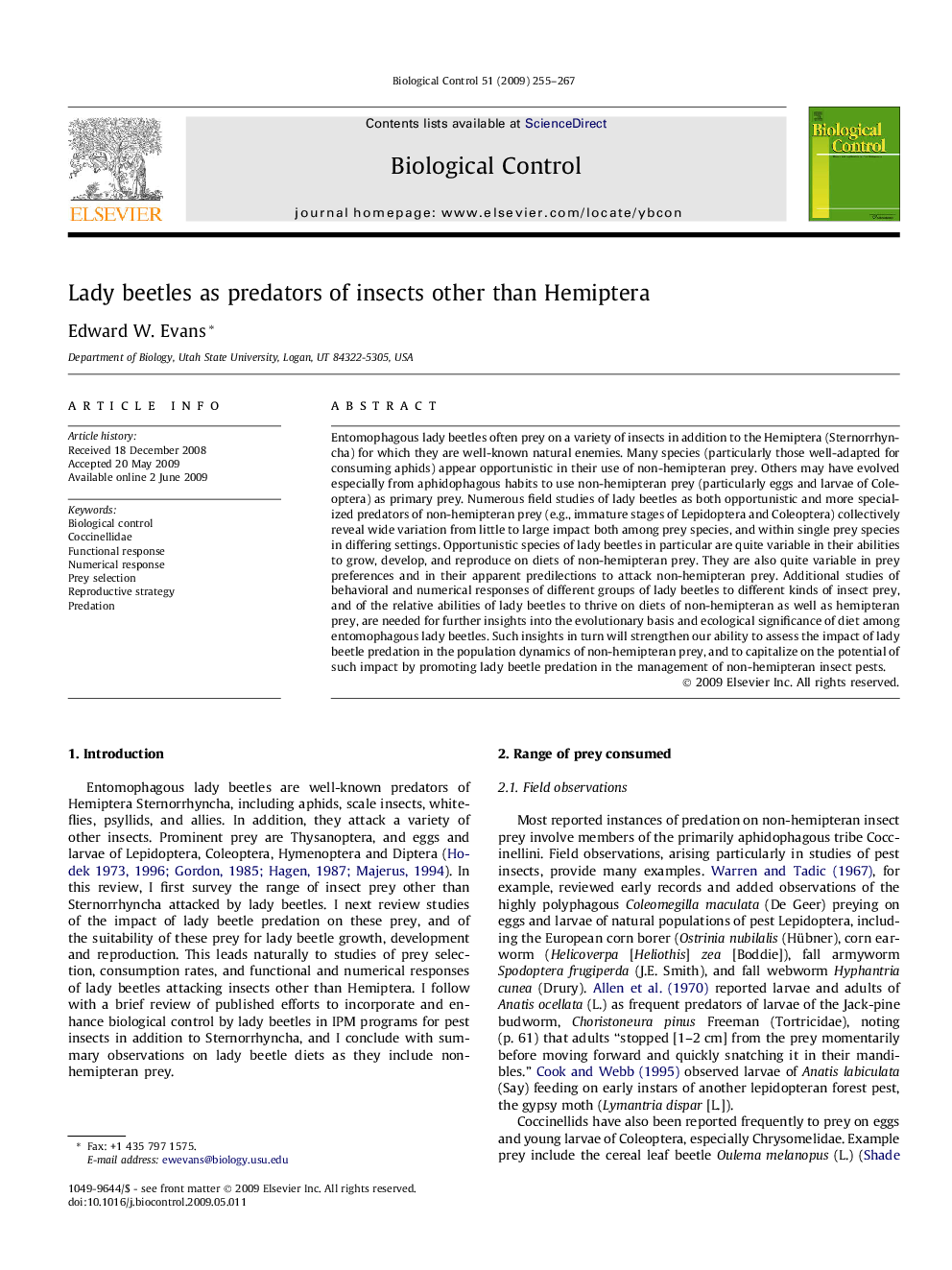| Article ID | Journal | Published Year | Pages | File Type |
|---|---|---|---|---|
| 4504292 | Biological Control | 2009 | 13 Pages |
Entomophagous lady beetles often prey on a variety of insects in addition to the Hemiptera (Sternorrhyncha) for which they are well-known natural enemies. Many species (particularly those well-adapted for consuming aphids) appear opportunistic in their use of non-hemipteran prey. Others may have evolved especially from aphidophagous habits to use non-hemipteran prey (particularly eggs and larvae of Coleoptera) as primary prey. Numerous field studies of lady beetles as both opportunistic and more specialized predators of non-hemipteran prey (e.g., immature stages of Lepidoptera and Coleoptera) collectively reveal wide variation from little to large impact both among prey species, and within single prey species in differing settings. Opportunistic species of lady beetles in particular are quite variable in their abilities to grow, develop, and reproduce on diets of non-hemipteran prey. They are also quite variable in prey preferences and in their apparent predilections to attack non-hemipteran prey. Additional studies of behavioral and numerical responses of different groups of lady beetles to different kinds of insect prey, and of the relative abilities of lady beetles to thrive on diets of non-hemipteran as well as hemipteran prey, are needed for further insights into the evolutionary basis and ecological significance of diet among entomophagous lady beetles. Such insights in turn will strengthen our ability to assess the impact of lady beetle predation in the population dynamics of non-hemipteran prey, and to capitalize on the potential of such impact by promoting lady beetle predation in the management of non-hemipteran insect pests.
